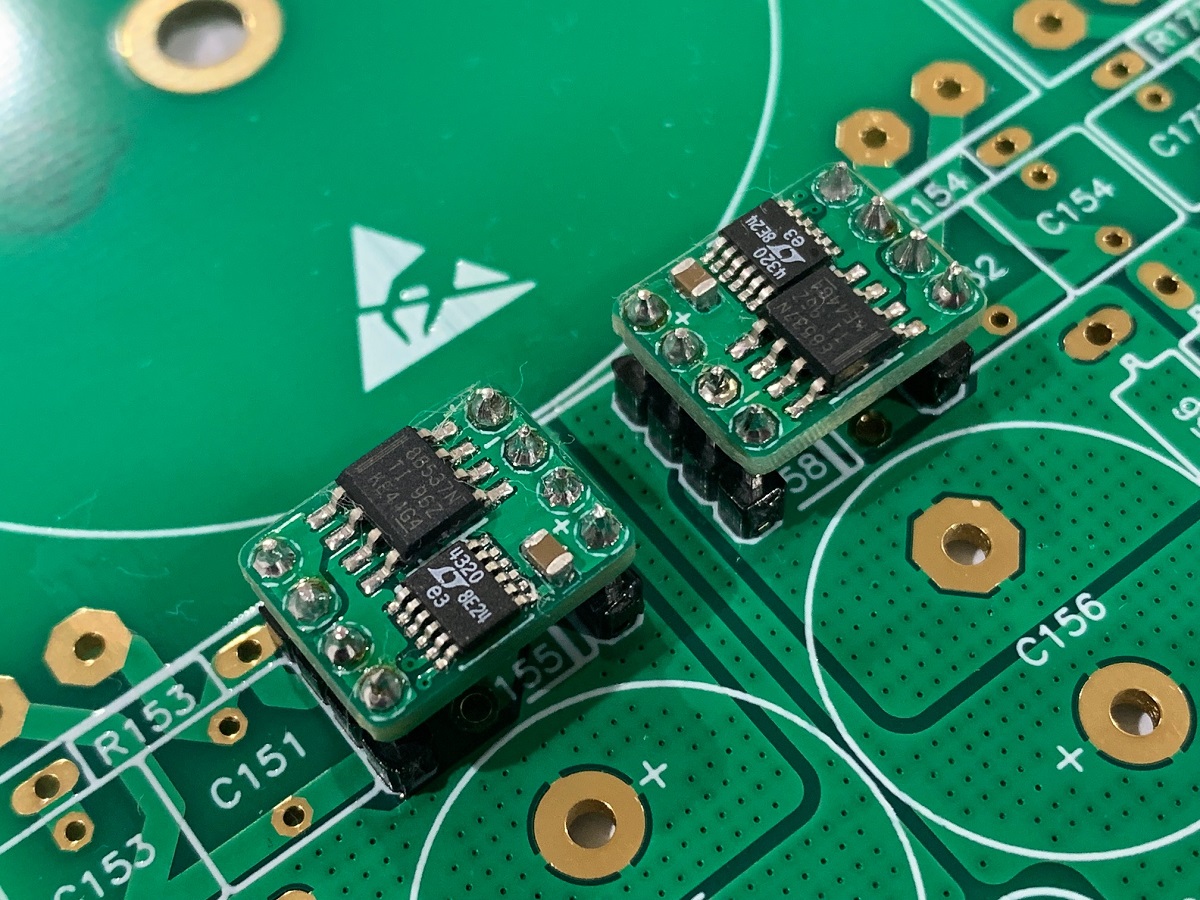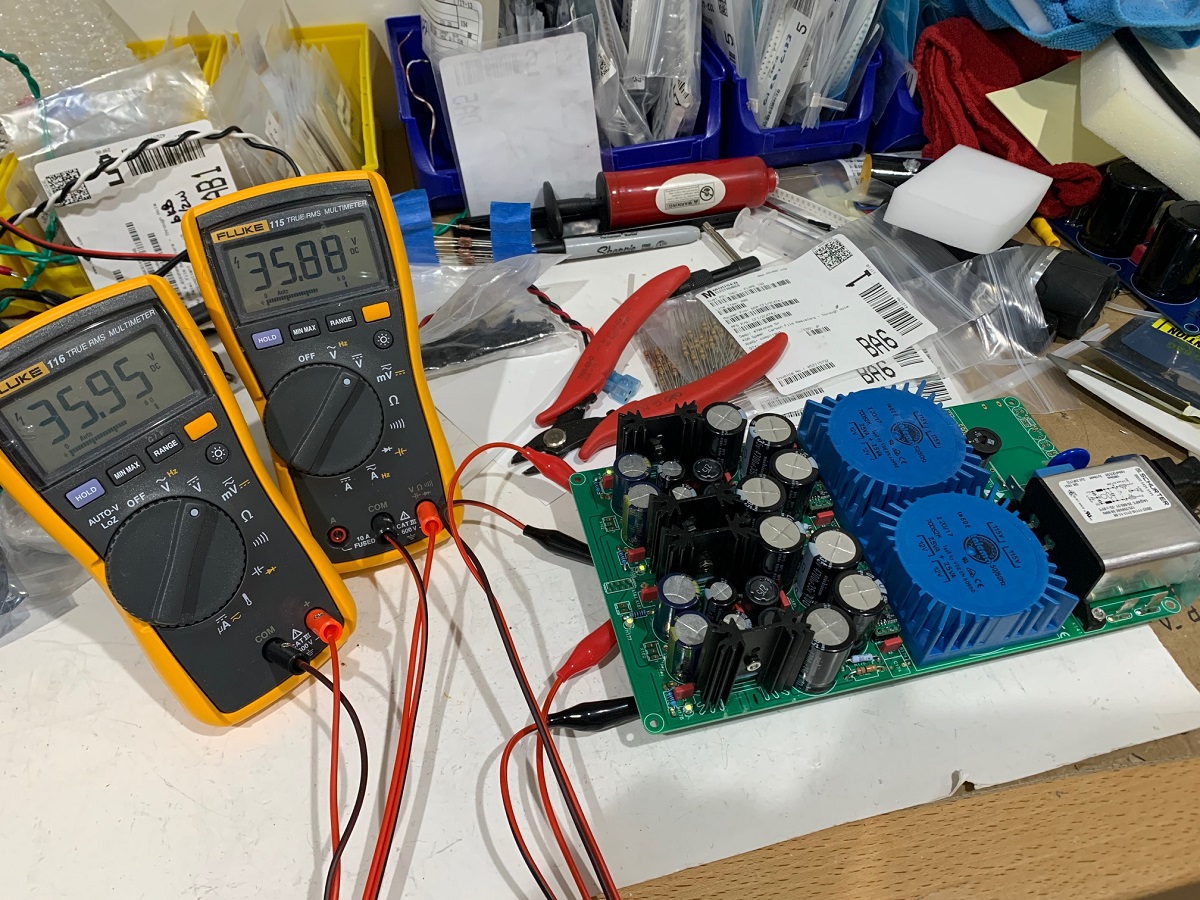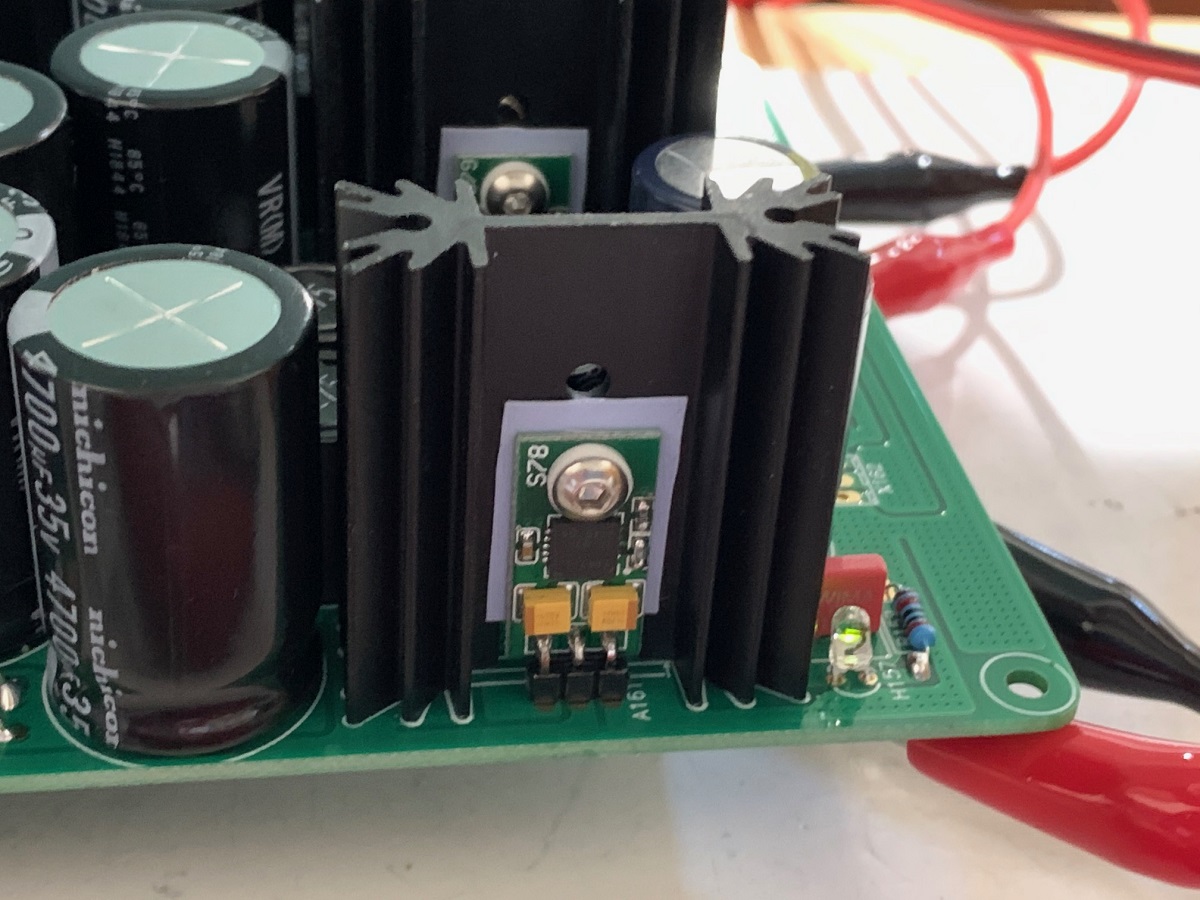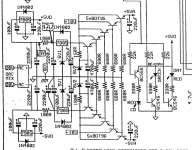I agree, I should have put cap Mx before the LDO! I later made the Gen 2 Yarra dual mono PSU and skipped the Cx but had a nice CLC upstream.
Linear trafo // Lt4320 active bridges // CLC // TPS7A4XXX
The YARRA Preamplifier/HPA for Melbourne DB Group Buy
Worlds smallest active bridge modules? They plug into pin compatible 1N400X diode pads:


Linear trafo // Lt4320 active bridges // CLC // TPS7A4XXX
The YARRA Preamplifier/HPA for Melbourne DB Group Buy
Worlds smallest active bridge modules? They plug into pin compatible 1N400X diode pads:
I agree, I should have put cap Mx before the LDO! I later made the Gen 2 Yarra dual mono PSU and skipped the Cx but had a nice CLC upstream.
Linear trafo // Lt4320 active bridges // CLC // TPS7A4XXX
The YARRA Preamplifier/HPA for Melbourne DB Group Buy
Worlds smallest active bridge modules? They plug into pin compatible 1N400X diode pads:



Linear trafo // Lt4320 active bridges // CLC // TPS7A4XXX
The YARRA Preamplifier/HPA for Melbourne DB Group Buy
Worlds smallest active bridge modules? They plug into pin compatible 1N400X diode pads:
This is hilarious...the man asked for a confirmation of the simpler solution between A and B ...and this topic ended as usual in promoting the most complicated and useless designs comprized of (A +B)! ...What's even funnier when the same people bashing cheap and effective commercial equipment solutions against "utility" come up with their own monstruous designs praizing high-end theories...
Same cheap diy succes recipee: you buy tens of thousands j-fets at a price of 10 dollar/ ton in the early 2000's Silicon Valley cleaning then 20 years later you come up with "must have" phantasy designs to justify selling those j-fets for 100 dollar each...
Same cheap diy succes recipee: you buy tens of thousands j-fets at a price of 10 dollar/ ton in the early 2000's Silicon Valley cleaning then 20 years later you come up with "must have" phantasy designs to justify selling those j-fets for 100 dollar each...
I'm trying to think of a circumstance whereby a regulator improves performance in a well designed amp.
Perhaps single ended, single supply, class A with no negative feedback?
I'm not interested in building that, personally.
Perhaps single ended, single supply, class A with no negative feedback?
I'm not interested in building that, personally.
Excellent amps have been built for decades without regulators involved.
The key of those "well designed" amps was to utilize a properly rated power transformer with its own built-in regulation (resistance to sag) qualities.
The key of those "well designed" amps was to utilize a properly rated power transformer with its own built-in regulation (resistance to sag) qualities.
I'm trying to think of a circumstance whereby a regulator improves performance in a well designed amp.
There is a very clear case where regulated power supply improves performance of any well designed amplifier, if we accept that PS is not part of this “good design”. That is any power amplifier with common PS for both channels, what is often present in DIY builds.
In case that maximum performance is goal, regulated PS provides no need for two separate transformers and double count of all parts needed for the complete PS. Performance of regulated PS is incomparably better than any unregulated classic CRC or CLC could have, never mind the amount of capacitors or H thrown in.
I see this as more economical (for my wallet) and ultimate in performance solution.
according to these sites, the capacitor multiplier is very well suited for use in class A amps:I'm trying to think of a circumstance whereby a regulator improves performance in a well designed amp.
Perhaps single ended, single supply, class A with no negative feedback?
I'm not interested in building that, personally.
Capacitance Multiplier Power Supply Filter
The Class-A Amplifier Site - The Capacitance Multiplier
Ah, probably we all don’t look the same on what regulated PS is. Forgot that in my response. 🙂
I don’t count capacitance multipliers as regulators. They are ripple suckers with high output impedance, so they still need adequate capacitance at output.
I don’t count capacitance multipliers as regulators. They are ripple suckers with high output impedance, so they still need adequate capacitance at output.
That' mostly working in tube amplifiers where high inductance is associated with a high count of winding turns, the internal resistance being just a secondary effect of usual winding thickness as in low voltage transformers you won't get much inductance nor its associated resistance unless you design for a boiling transformer...which you surely don't want.You may look thus for the resistor damping effect of the rectifier diodes capacitance resonance with the high inductance secondary winding in high voltage transformers, but almost imposible to find in low voltage transformers, that's why audiophile nakamichi preamps used high frequency diodes with very low capacitance instead of the usual solution of raising the rectifier diodes capacitance externally to lower the resonance frequency with the secondary winding impedance making thus the hum harmonics reduction more effective.Excellent amps have been built for decades without regulators involved.
The key of those "well designed" amps was to utilize a properly rated power transformer with its own built-in regulation (resistance to sag) qualities.
A well designed capacitance multiplier actually needs a high capacitance at the input...Ah, probably we all don’t look the same on what regulated PS is. Forgot that in my response. 🙂
I don’t count capacitance multipliers as regulators. They are ripple suckers with high output impedance, so they still need adequate capacitance at output.
Almost all the time I need to evaluate everything that's needed in a capacitance multiplier to be the best that can be, i turn to AOE notes on it and of course AudioNote's DAC 4 one:
Attachments
A well designed capacitance multiplier actually needs a high capacitance at the input...
No dispute there.
I just pointed that, due output impedance, large capacitance at output is needed with Cap Mx as would be with regular CRC, while regulated PS will be fine with several hundred uF for large loads like 10 A.
The need for output capacitance drops with the higher hfe of the transistor, that is why the more transistors as in DAC 4, the better. Darlington transistors usually are sufficient.Yet capacitor multipliers are way better at killing residual noise than regulators if they can hold the current with low ripple.
Yet capacitor multipliers are way better at killing residual noise than regulators if they can hold the current with low ripple.
Yes, they are but this is moot point if we are discussing regulated PS for power amplifiers. I doubt 3 uV noise from regulated PS would be a problem for any power amp design.
- Home
- Amplifiers
- Solid State
- Chip regulators vs capacitance multiplier
